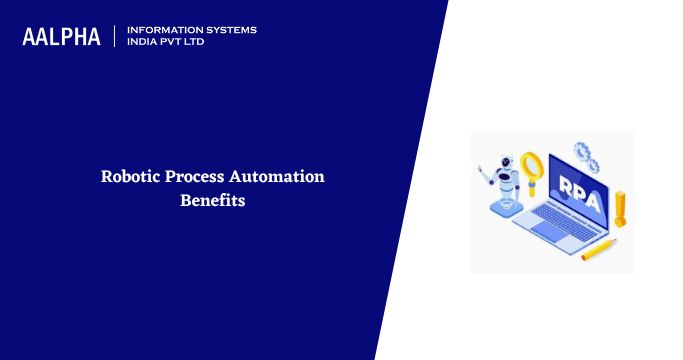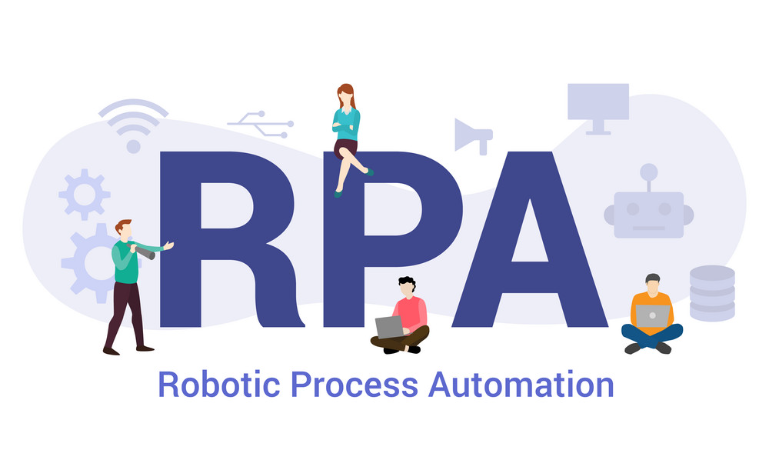Today, businesses are working hard to improve their BPA (Business Process Automation) and provide cutting-edge client experiences. To deliver these seamless client experiences and automate the multiplicity of accompanying business operations, they must use various automation technologies. RPA (Robotic Process Automation) is one of the most essential automation technologies contributing significantly to the complete solutions.
RPA is the subsequent technological salvation for businesses since it increases production and efficiency. In addition, when integrated with traditional business solutions, it may accelerate the digital transformation by allowing organizations to govern end-to-end business processes, therefore laying the groundwork for continuous process improvement.
Today’s Innovations in RPA Services
Global adoption of RPA processes has had significant, beneficial benefits on corporate output. Global usage of RPA technology has increased faster than ever before. It continues to lead the business service sector in terms of quality. Insurance, banking, and financial sectors have begun to see the effects of their use of RPA. Utilities, manufacturing, hotels, and mining, to mention a few, are now investing in the RPA, which is a welcome development. Let’s examine the robotic process automation applications in several industries:
Implementation of RPA
With its adaptable and non-intrusive design, robotic automation that encompasses such a vast array of applications and business processes is now a realistic alternative. In addition, it can provide improved management of the ever-changing labour market. Therefore, the implementation of RPA becomes a crucial measure for competitive organizations to take. According to a recent poll, 66% of respondents were considering expanding RPA programs, and 70% had raised their RPA investment budgets.
Robotic Process Automation Benefits
Considering the growth of the operating model and IT environment, every sector should know where RPA is appropriate and what benefits it may bring their organization. Here are the eight most substantial of these advantages:
-
Enhanced Productivity
Most robots produced by the RPA system are highly specialized for specific jobs. Consider an RPA bot that enables a worker to write a monthly report in 20 minutes instead of four hours manually. The robots can compute, click, and browse the screen in a few seconds. This time savings is insufficient to justify replacing the worker with a robot. However, it does increase the worker’s productivity, which will contribute to future cost avoidance. With process automation, the company’s productivity will increase.
-
Improve Efficiency
RPA software can operate nonstop, 24 hours a day, seven days a week, 365 days a year. Likewise, it does not take vacations or get ill. A single RPA robot may do the same tasks as two to five full-time people, or perhaps more. Robots can simultaneously accomplish the same amount of work in less time or more labour.
-
Strengthen Security
The most compelling advantage of robotic process automation is that it acts on a granular level. Because the bot does only individual activities, there is no risk of information leaking from one section to another. The data accesses in this instance are adequately managed and documented. The most neglected aspect of RPA adoption is that robots can replace human workers. However, RPA adoption requires system administrators to be able to manage a workforce comprised of both humans and computers.
-
Enhance Scalability Potential
Robotic process automation enables the kind and quantity of required activities for a particular target to be adapted to the needs of the time. Robotic automation may assist enterprises in meeting the criteria of specific goals. Because the robotic workforce is adaptable to time- and task-specific needs, even small firms may meet the unexpectedly shifting market demands.
-
Enhance Analytical
RPA enable enterprises to collect data for logical reasons about job performance. Work volume patterns, cycle times, failures, and exceptions are just a few examples. When data is effectively obtained, compared, and separated from data acquired in other sectors, it improves micro and macro-level decision making. In addition, the organization can identify areas where business processes should be further optimized to increase efficiency.
-
Non-disruptive
Some firms are hesitant to replace outdated systems due to the difficulty of the associated IT infrastructures due to the expense, business downtime, and complexity. RPA tools connect with systems at the presentation layer or UI end like a person. Even robots can use their login credentials. Since the underlying technology program stays intact, adopting robotic process automation in a corporation is neither complicated nor disruptive in this way.
Conclusion
A business must employ a company to understand its core business objectives better. If the existing business processes and IT infrastructure are efficient, the organization may consider RPA automation a user-friendly method for achieving its automation goals. Even if the process, platforms, and applications are obsolete, RPA may be utilized to resolve the problems. Overall, in this age of digital change, robotic process automation is essential for fostering a healthy work environment in businesses.
Finally, to know more robotic process automation benefits, contact us today!





Share This Article:
Written by:
Muzammil K
Muzammil K is the Marketing Manager at Aalpha Information Systems, where he leads marketing efforts to drive business growth. With a passion for marketing strategy and a commitment to results, he's dedicated to helping the company succeed in the ever-changing digital landscape.
Muzammil K is the Marketing Manager at Aalpha Information Systems, where he leads marketing efforts to drive business growth. With a passion for marketing strategy and a commitment to results, he's dedicated to helping the company succeed in the ever-changing digital landscape.